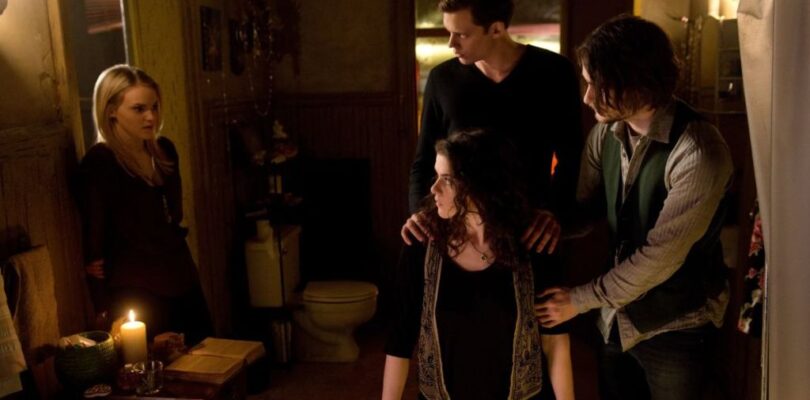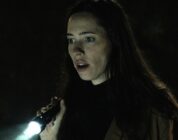Anyone familiar with Bill Skarsgård knows he’s earned his crown as a king of modern horror. When it comes to casting a chilling role, regardless of the style, he’s the go-to choice for almost everyone. But even though it might seem like he suddenly appeared after playing Pennywise in the newer It adaptations, he had already proven his talent in the genre long before that – back when streaming services weren’t yet the massive force they are today. Starring in Netflix’s Hemlock Grove was a clear stepping stone in his rise to fame, though not many people know that, since the series has now become something of a mystery you can barely access.
Videos by ComicBook.com
Hemlock Grove was a horror/thriller series that aired from 2013 to 2015, set in a fictional Pennsylvania town of the same name. It begins with the discovery of a young woman’s brutally murdered body near an old steel mill. Suspicion quickly falls on Peter Rumancek (Landon Liboiron), a 17-year-old gypsy who had recently arrived in town – especially after rumors spread that he was a werewolf. In an effort to clear his name, he teams up with Roman Godfrey (Skarsgård), heir to a powerful local family. Together, they set out to investigate the murders. The series had three seasons, and the major surprise is that it was one of Netflix’s very first original productions.
At the time of its premiere, Hemlock Grove got a mixed reception from both critics and viewers. It never really took off (which helps explain why it’s mostly forgotten today), and even though Netflix usually keeps viewership numbers under wraps, content chief Ted Sarandos admitted in a 2016 interview with The Daily Telegraph that Hemlock Grove didn’t deliver the impact they had hoped for. Naturally, this led to the show’s cancellation.
Reports at the time described the decision as mutual between Netflix and the creators, based on several factors – including declining audience interest and high production costs. So far, nothing too out of the ordinary, since series cancellations are a regular occurrence – even when fans push to keep them alive, as seen with shows like Sense8 or Anne with an E. What did raise questions, however, was the complete removal of the series from Netflix’s catalog years later, something that rarely happens with content originally financed by the platform.
[RELATED: 5 Iconic Horror Monsters Bill Skarsgård Should Play After Nosferatu and IT]
But there’s a reason for that: behind-the-scenes licensing agreements. The streaming rights were held by the production company Gaumont International Television, and when its deal with Netflix expired, the platform no longer had the rights to stream the show. Despite carrying the Netflix Original label, Hemlock Grove was not legally owned by Netflix, which meant it could be removed once the licensing ended. Since then, the show hasn’t appeared on any major streaming service, making it practically inaccessible to the general public. The episodes aren’t even available for purchase or rental on digital platforms, frustrating fans and viewers interested in exploring Skarsgård’s early work.

The absence of Hemlock Grove also serves as a warning about the illusion that all Netflix Originals will always be available. Streaming, though convenient, is not a reliable archive. Viewers don’t actually own the content; they simply have access to it for as long as the platform allows. When the show’s removal was announced in 2022, many viewers pointed this out.
Still, despite not being as widely remembered as other series from that era, Hemlock Grove was a trailblazer that helped define what we now consider the “Netflix model” of consuming television. While it’s still possible to find a few episodes scattered online, watching the full series has become quite a task. It’s unfortunate – because if Skarsgård went on to shine in major productions from It to Nosferatu, Hemlock Grove certainly played a key role in getting him there.
Currently the only way to watch Hemlock Grove is using Hoopla, the library-adjacent platform, but even then, only Season 1 is available to users.




